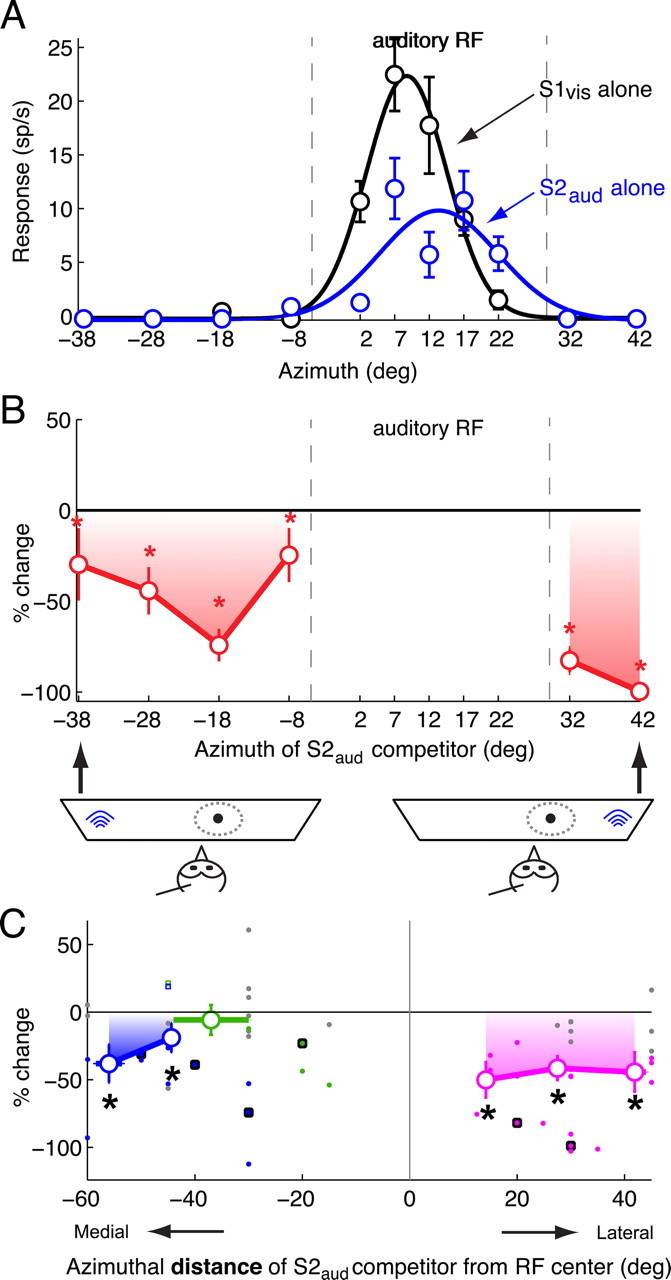Figure 8.

Spatial profile of the effect of an auditory competitor on responses to a looming visual stimulus centered in the RF. A, Azimuthal tuning: responses and best-fit Gaussian profiles of an OTi-d site to a single looming visual stimulus (S1vis; loom speed = 8°/s, black) and a single noise burst auditory stimulus (S2aud; 20 dB above threshold noise burst; blue). Positive (negative) azimuths represent locations contralateral (ipsilateral) with respect to the recording site. The data indicate mean ± SEM. B, Top, Azimuth-response profile for paired S1vis and S2aud stimuli. Site exhibited a pronounced effect in the presence of S2aud. Responses to S1vis and S2aud presented simultaneously as percentage changes with respect to the responses to the S1vis stimulus presented alone. S1vis was presented near the RF center, while S2aud was presented at various azimuths outside the auditory RF. Asterisks indicate significant response suppression (p < 0.05, see Materials and Methods). Bottom, Schematic diagram showing the stimulus configuration for two extreme S2aud locations. C, Summary of the effect of the azimuthal position of an auditory stimulus (S2aud) located outside the auditory RF on responses to a looming visual stimulus (S1vis) presented near the RF center (n = 14). Responses are shown as percentage changes with respect to the responses to the S1vis stimulus alone and are plotted as a function of the azimuthal distance of S2aud from the RF center. Only locations that were outside the auditory RF (i.e., locations at which single auditory stimuli did not drive responses; see Materials and Methods) were included. Positive values of distance represent locations lateral to the RF center; negative values represent locations medial to the RF. Filled dots indicate data from individual sites; large open circles indicate the average effect (see Materials and Methods); gray dots indicate individual data that were not significantly different from 0 (see Materials and Methods); squares with black borders indicate the data from the example site in Figure 8B. Locations lateral to the RF are shown in pink, those medial to the RF center and up to 15° into the opposite hemifield (represented on the same side of the brain) are shown in green, locations >15° into the opposite hemifield (represented on the opposite side of the brain) are shown in blue. Asterisks indicate significant response suppression (p < 0.05, see Materials and Methods).
